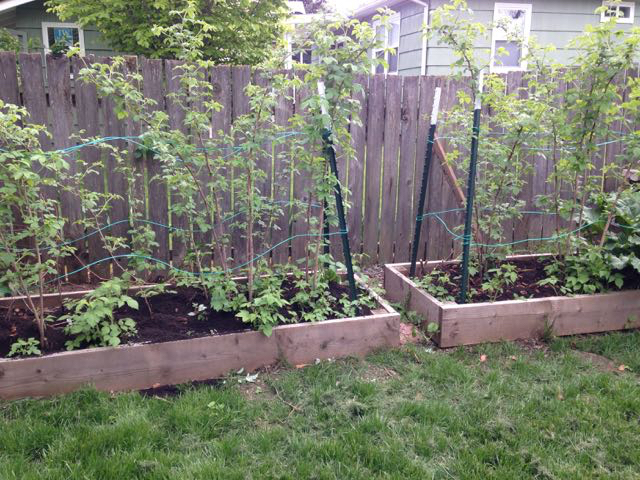Sunshine, Soil, and Solid Gardening Tips
Sunshine, beach sessions, and fruit straight off the vine. Summer is upon us, kiddos! And while it's all so brilliant, remember: overdoing the sun or underdoing the hydration can turn a day-glo summer lover into a parched piece of blistery leather in no time. Like the Dirt Hugger site safety manager Gavin "Full Throttle" Schmidt reminds us daily, "hydrate, hydrate, hydrate...".
Our garden soil is not so different from us bipeds when it comes to hydration. For optimal nutrient uptake, growth, and soil root penetration most garden plants prefer a hydrated soil. The Pacific Northwest spring usually offers an abundance of rain before transitioning into the drier summer season. This year, it seemed liked the rain shut off a little early, and we've received some phone calls from weary gardeners asking how to keep their garden soil well hydrated and rocking through the summer. So...here are some tips to address those sorts of questions, and help evade the threat of soil hydrophobia.
Proper Watering
From our experience, we have discovered that it is significantly more difficult to reintroduce moisture to a bone dry soil than it is to maintain moisture levels in an already hydrated soil. Makes sense, right? A dry, shriveled up soil just doesn't offer the same capillary action to move the introduced water around. To ensure adequate watering, we are especially big fans of drip irrigation systems. Drip systems provide the soil (and plants) a nearly constant, but slow rate application of water. Similarly, they are precise--drip systems minimize evaporative loss and the needless water run off that a higher volume watering method might produce.
We always recommend to customers using our 50-50 (compost-soil) Blend for garden or raised bed use that water be introduced slowly--especially if the material has gone dry. This approach encourages soil moisture penetration instead of surface pooling.
Topdressing
So you and your garden are drinking copious amounts of iced tea together for max hydration? Great, but you're still getting some gnarly sunburn. Apply a little sunscreen to yourself and a little bark mulch to the garden. A surface mulch really does act like a soil sunscreen, blocking sun heat from penetrating the soil and keeping to the plant root environment cool.
Add Organic Matter
Your wee little garden is so generous with the organic matter that it ungrudgingly puts on your kitchen table all summer long. Why not give back? Integrate organic matter into your garden soil, and you will increase its water holding capacity. Compost (typically 40~50% organic matter) can be applied to the surface as a top dress. If worked into the soil, we typically recommend a Fall or early spring application of 1 to 4 inches tilled into the garden bed at 6 to 8 inches.
Wind Protection
Settlers traveling across the western states would often journal of a peculiar form of endless angst that resulted from the harsh winds that pummeled the unfamiliar and vast open rangelands. Your garden can fall victim to a similar sort of "prairie madness"--especially considering the winds that ransack the Columbia River Gorge.
It is important to be mindful of your site conditions, and locate your garden in an area with reduced wind exposure. Alternatively, you can build aesthetically pleasing wind barriers to match your raised beds or consider planting more wind tolerant plants near the exterior of your garden as a wind break.
We're Here for You!
We're always down to help you find a solution to improve your soil. If you ever have any questions, don't hesitate to give us a shout!





